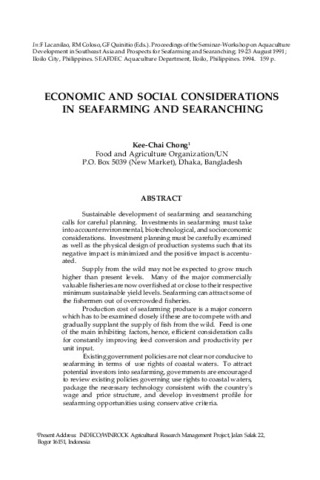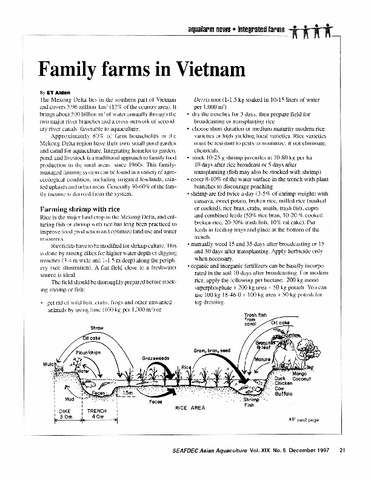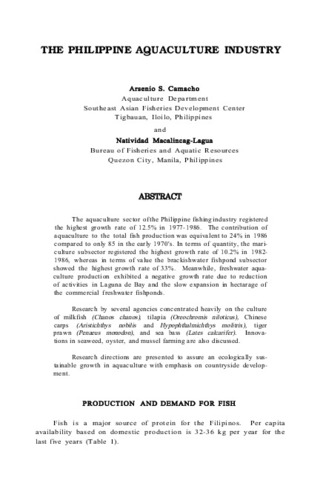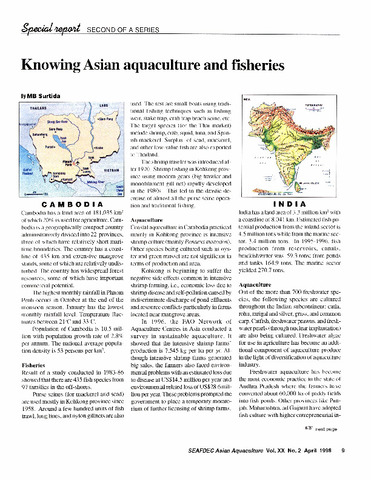Economic and social considerations in seafarming and searanching
Share
Abstract
Sustainable development of seafarming and searanching calls for careful planning. Investments in seafarming must take into account environmental, biotechnological, and socioeconomic considerations. Investment planning must be carefully examined as well as the physical design of production systems such that its negative impact is minimized and the positive impact is accentuated.Supply from the wild may not be expected to grow much higher than present levels. Many of the major commercially valuable fisheries are now overfished at or close to their respective minimum sustainable yield levels. Seafarming can attract some of the fishermen out of overcrowded fisheries.Production cost of seafarming produce is a major concern which has to be examined closely if these are to compete with and gradually supplant the supply of fish from the wild. Feed is one of the main inhibiting factors, hence, efficient consideration calls for constantly improving feed conversion and productivity per unit input.Existing government policies are not clear nor conducive to seafarming in terms of use rights of coastal waters. To attract potential investors into seafarming, governments are encouraged to review existing policies governing use rights to coastal waters, package the necessary technology consistent with the country's wage and price structure, and develop investment profile for seafarming opportunities using conservative criteria.
Suggested Citation
Chong, K. (1994). Economic and social considerations in seafarming and searanching. In F. Lacanilao, R. M. Coloso, & G. F. Quinitio (Eds.), Proceedings of the Seminar-Workshop on Aquaculture Development in Southeast Asia and Prospects for Seafarming and Searanching; 19-23 August 1991; Iloilo City, Philippines. (pp. 152-159). Tigbauan, Iloilo, Philippines: Aquaculture Department, Southeast Asian Fisheries Development Center.
Subject
Collections
- ADSEA '91 [21]
Related items
Showing items related by title, author, creator and subject.
-
Family farms in Vietnam
Aldon, Eva T. (Aquaculture Department, Southeast Asian Fisheries Development Center, 1997) -
The Philippine aquaculture industry
Camacho, Arsenio S.; Macalincag-Lagua, Natividad (Aquaculture Department, Southeast Asian Fisheries Development Center, 1988)The aquaculture sector of the Philippine fishing industry registered the highest growth rate of 12.5% in 1977-1986. The contribution of aquaculture to the total fish production was equivalent to 24% in 1986 compared to ... -
Knowing Asian aquaculture and fisheries
Surtida, Marilyn B. (Aquaculture Department, Southeast Asian Fisheries Development Center, 1998-04)This article is the second of four parts.





